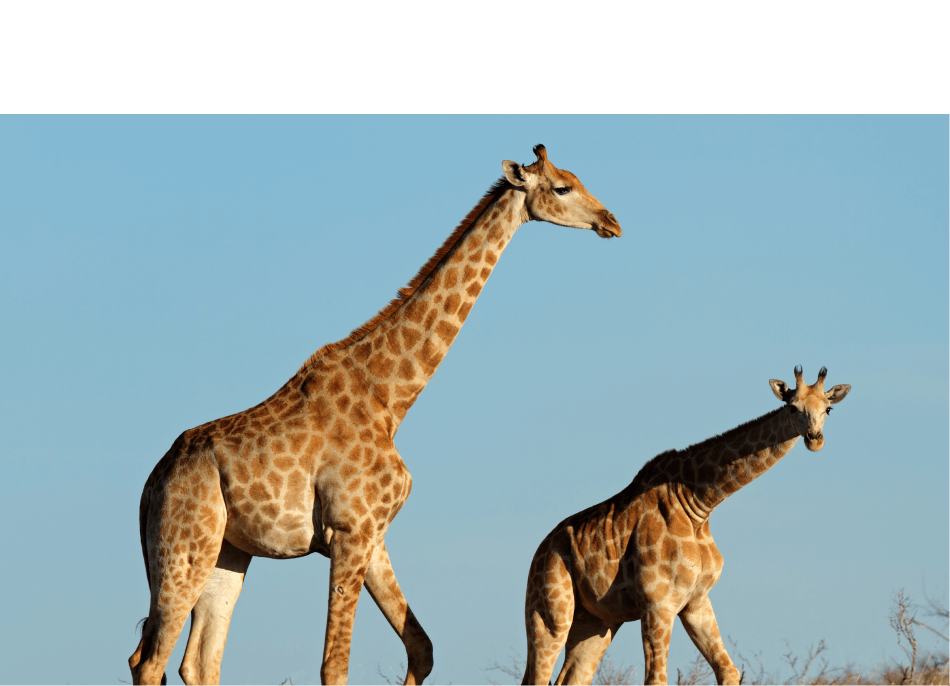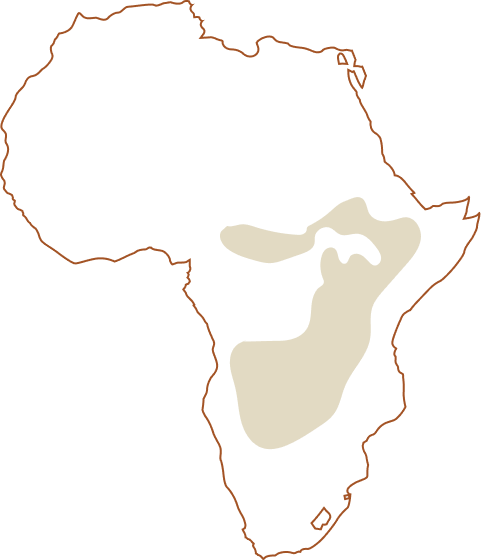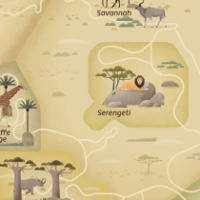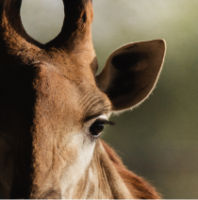
Southern Giraffe
Giraffa camelopardalis giraffa

The Giraffe is the tallest mammal in the world and lives in savannahs and open woodlands.
Its neck can be up to 2.7 metres long, but is still made up of only 7 vertebrae, just like humans. It uses its long neck to reach high up into the trees, where other animals cannot, avoiding competition for food. The Giraffe’s tongue, can be up to 50 centimetres long, can also carefully grasp the tender leaves that grow between the thorns of acacias.
The heart of an adult giraffe weighs around 11 kilos and is about 60 centimetres long. This is so that it can pump blood to the brain, with a blood pressure twice that of a human.
The Southern Giraffe eats up to 66 kg of plant material a day, not only acacia leaves, but also leaves of other trees, shoots, fruit and even grass after the rainy season.
Giraffes have very good vision and can detect predators at long range. Although adults have very few predators due to their large size and powerful defensive kicks, lions, leopards, hyenas, or wild dogs may prey on young or sick animals.
Conservation
Giraffe populations are declining in East Africa and drastically in West Africa. This is due to desertification of their habitat and excessive hunting. Nowadays, large populations are only found in national parks and other protected areas.
- Species
- Southern Giraffe
- Height
- 4.7-5.7 m
- Weight
-
1.2-2 tonnes
- Calf
- 1
- Range
- South Africa, Namibia, Botswana, Zimbabwe, Mozambique.
- Conservation status
- Vulnerable
-


©2025 EPAA Sharjah All Rights Reserved

